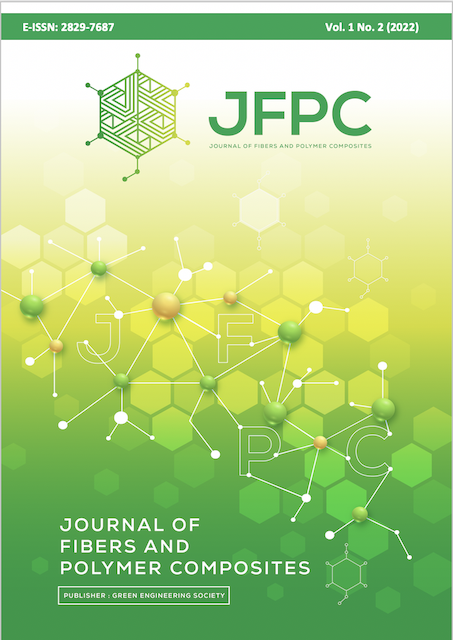Effect of Alkaline Concentration Treatments on the Chemical, Physical and Thermal Characteristics of Cellulose from Tapioca Solid Waste
##plugins.themes.academic_pro.article.main##
Abstract
Tapioca solid waste (TSW), as a source of natural fiber, is produced in abundance, but its utilization is minimal and even has the potential to pollute the environment. Unfortunately, TSW fiber has low physical, mechanical, and thermal characteristics that limit its application. Therefore, one way to improve the characteristics of TSW so that the fiber can be applied in various fields is by using the modified alkalization method. This study aims to determine the effect of alkali concentration on cellulose's chemical, physical, and thermal characteristics from TSW. Alkali treatment used NaOH solution of 0%, 5%, 10%, 15%, and 20% (v/w). The chemical characteristics of the fiber were analyzed for moisture, starch, lignin, hemicellulose, and cellulose content. Fiber surface morphology was analyzed by scanning electron microscopy (SEM), functional group changes with Fourier transform infrared (FTIR), degree of crystallinity with X-ray diffraction (XRD), and thermal stability with thermogravimetric analysis (TGA). The results showed that alkaline treatment affected changes in the chemical, physical, and thermal characteristics of cellulose from TSW. The increasing concentration of NaOH causes the water and cellulose content to increase, while the starch, hemicellulose, and lignin content decrease. Surface morphology is getting rougher, fiber dimensions increase to 10% NaOH concentration, but at higher concentrations, it causes a decrease in dimensions. FTIR analysis showed that the intensity of the hemicellulose and lignin functional groups decreased with increasing NaOH concentration. The degree of crystallinity and crystal size increased until the NaOH concentration was 10%, but at higher concentrations, it tended to decrease. Meanwhile, d-spacing increased with increasing NaOH concentration. The thermal stability of the fiber tends to decrease with increasing NaOH concentration. Alkalized cellulose from TSW has the potential to be used in a wider field, such as adsorbent and composite reinforcing agent.
##plugins.themes.academic_pro.article.details##

This work is licensed under a Creative Commons Attribution-NonCommercial-ShareAlike 4.0 International License.

